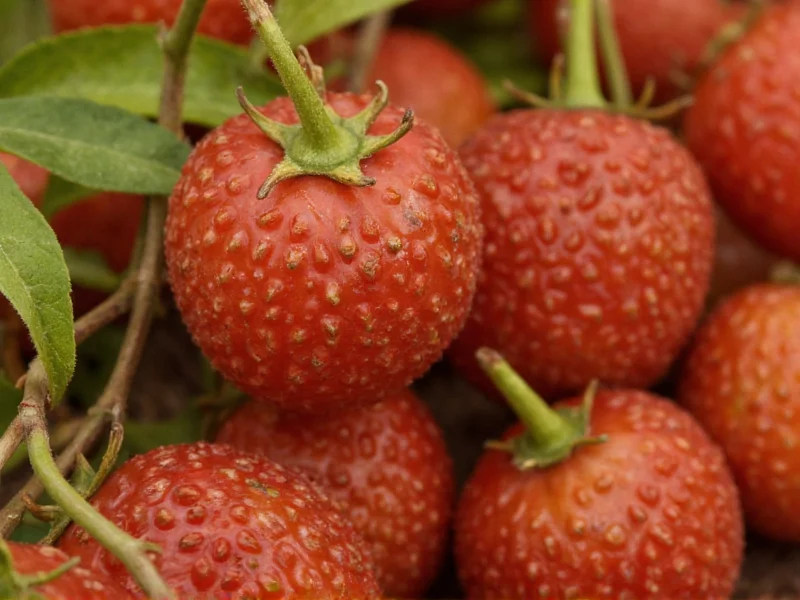When exploring the question is peppercorn a fruit, we need to examine both botanical science and culinary tradition. Botanically speaking, peppercorns qualify as fruits because they develop from the ovary of a flowering plant and contain seeds. Specifically, they're classified as drupes—a type of berry—produced by the Piper nigrum vine native to South India. However, in culinary contexts, peppercorns are universally treated as spices, not fruits, due to their intense flavor profile and primary usage in seasoning rather than as a sweet component.
Botanical Classification Explained
The Piper nigrum plant produces small, green berries that ripen to red. Each berry contains a single seed surrounded by fruit tissue. In botanical terms, any structure that develops from a flower's ovary and encloses seeds qualifies as a fruit. By this scientific definition, peppercorns are indeed fruits—more precisely, they're single-seeded berries.
This creates confusion because everyday language uses "fruit" to describe sweet, fleshy produce like apples or oranges. Botanists, however, use a much broader definition that includes seemingly non-fruit items like cucumbers, tomatoes, and yes—peppercorns.
From Vine to Spice Rack: The Peppercorn Journey
All peppercorns begin as green berries on the Piper nigrum vine. Their color and flavor profile depends on processing methods:
| Type | Processing Method | Botanical Status | Culinary Classification |
|---|---|---|---|
| Black Peppercorns | Unripe berries dried in sun | Dried berry (fruit) | Spice |
| White Peppercorns | Ripe berries with outer layer removed | Seed only (not fruit) | Spice |
| Green Peppercorns | Unripe berries preserved | Fresh berry (fruit) | Specialty spice |
| Red Peppercorns | Ripe berries dried whole | Dried berry (fruit) | Rare specialty spice |
Why Culinary and Botanical Classifications Differ
The disconnect between is black peppercorn a fruit in science versus cooking stems from different classification systems. Botanists focus on plant structure and development, while chefs categorize ingredients by flavor, texture, and usage. Peppercorns deliver pungent heat from piperine rather than sweetness, placing them firmly in the spice category despite their botanical fruit status.
This distinction matters practically: you wouldn't use peppercorns like apples or bananas in recipes. Their intense flavor means they're measured in pinches or grinds, not cups or slices. Understanding this botanical classification of peppercorn helps explain why they behave differently than culinary fruits in cooking.
Common Misconceptions Clarified
Many confuse peppercorns with chili peppers, which belong to a completely different plant family (Capsicum). While both provide heat, chili peppers are true botanical fruits that function as vegetables in cooking. Black pepper's heat comes from piperine, not capsaicin like in chilies.
Another frequent error involves calling peppercorns "seeds." Only white peppercorns qualify as seeds—the others include fruit tissue. When people ask is peppercorn a fruit or seed, the accurate answer depends on peppercorn variety and processing method.
Practical Implications for Cooks
Knowing the culinary classification of peppercorn affects how you use this spice:
- Freshness matters more – Unlike fruits that ripen after picking, peppercorns lose potency when exposed to air
- Storage differs – Keep peppercorns in airtight containers away from light, unlike most fruits
- Preparation varies – Whole peppercorns preserve flavor better than pre-ground versions
- Flavor pairing – Complements savory dishes rather than sweet applications like most fruits
Professional chefs understand that the peppercorn plant fruit delivers complex flavor notes beyond simple heat—floral, woody, and citrus undertones that transform when freshly ground. This complexity explains why whole peppercorns remain a kitchen staple despite being technically fruits that nobody eats like conventional fruit.
Scientific Perspective on Pepper Classification
Botanists classify peppercorns as drupes—a berry subtype with thin outer skin, fleshy middle, and hard inner shell surrounding the seed. This places them in the same botanical category as grapes and currants, though their flavor profile couldn't be more different. The Piper nigrum fruit's unique chemical composition (particularly piperine content) creates the pungency that defines black pepper.
When researchers study the peppercorn fruit or seed question, they confirm that only white pepper qualifies as a seed—the others contain varying amounts of fruit tissue. This scientific precision matters less in cooking than understanding how different peppercorn types behave in recipes.











 浙公网安备
33010002000092号
浙公网安备
33010002000092号 浙B2-20120091-4
浙B2-20120091-4